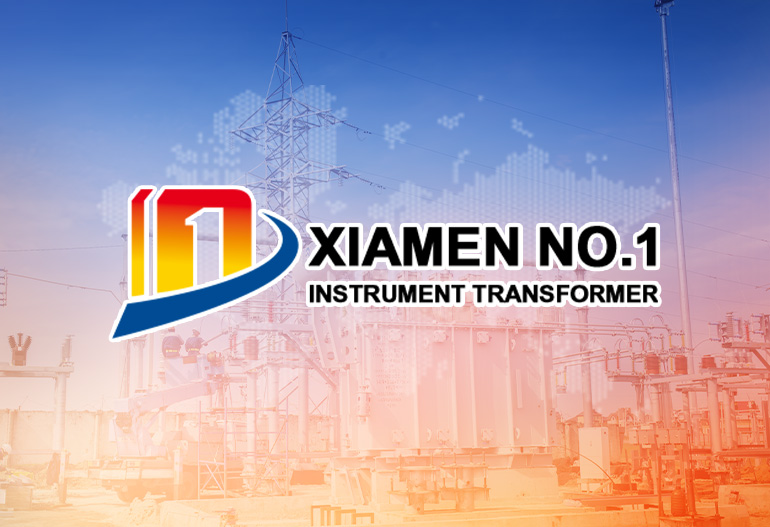
News
What Are Current and Potential Transformers? A Fundamental Guide
1. What Are Current Transformers (CTs)?
1.1 Operating Principle of CTs
The primary winding is connected in series with the high-current circuit being measured. It typically has very few turns (often just 1 or 2 turns) and is designed to carry the full load current of the circuit (e.g., hundreds or thousands of amperes).
The secondary winding has many more turns and is connected to measuring instruments or relays. It produces a lower current (usually 5 A or 1 A in standard designs) that is proportional to the primary current.
Ip = Primary current (high current)
Is = Secondary current (low current)
Np = Number of primary turns
Ns = Number of secondary turns
1.2 Key Characteristics of CTs
Isolation: CTs provide electrical isolation between the high-voltage primary circuit and the low-voltage secondary circuit, protecting operators and equipment from dangerous voltages.
Burden: The "burden" of a CT refers to the total impedance (resistance, inductance, and capacitance) of the secondary circuit, including instruments, relays, and connecting wires. Exceeding the rated burden can cause inaccuracies in measurement.
Accuracy Class: CTs are classified by their accuracy, which specifies the maximum allowable error in current transformation. Common accuracy classes include 0.1, 0.2, 0.5, 1, and 3, with lower numbers indicating higher precision. For example, a 0.5-class CT has a maximum error of ±0.5% at rated current.
1.3 Types of Current Transformers
1.3.1 Based on Construction
Window-type CTs: These have a hollow core (no primary winding). The high-current conductor itself acts as the primary winding, passing through the core’s "window." They are compact and widely used in switchgear and busbars.
Wound-type CTs: Both primary and secondary windings are physically wound around the core. The primary winding may have multiple turns, making them suitable for lower primary currents (e.g., 50–200 A).
1.3.2 Based on Application
Measuring CTs: Designed for high accuracy in current measurement. They are used with ammeters, energy meters, and power quality analyzers.
Protective CTs: Optimized for reliability during fault conditions (e.g., short circuits), where currents can surge to 20–30 times the rated value. They ensure protective relays operate correctly to isolate faults.
1.3.3 Based on Installation
Busbar CTs: Mounted around busbars (conductive bars) in switchboards.
Cable-type CTs: Clamped around cables, allowing easy installation without disconnecting the circuit.
Oil-immersed CTs: Used in high-voltage applications (e.g., power transformers) where insulation is enhanced by oil.
1.4 Critical Safety Note for CTs
2. What Are Potential Transformers (PTs/VTs)?
2.1 Operating Principle of PTs
The primary winding has many turns and is connected across the high-voltage circuit (e.g., 11 kV, 33 kV, or 132 kV).
The secondary winding has fewer turns and delivers a lower, standardized voltage (typically 110 V or 220 V) to measuring instruments.
Vp = Primary voltage (high voltage)
Vs = Secondary voltage (low voltage)
Np = Number of primary turns
Ns = Number of secondary turns
2.2 Key Characteristics of PTs
Isolation: Like CTs, PTs isolate the high-voltage primary from the low-voltage secondary, ensuring safety.
Burden: The burden of a PT is the total impedance of the secondary circuit (instruments, relays, wiring). Excessive burden can lead to voltage drop and measurement errors.
Accuracy Class: PTs are rated for accuracy (e.g., 0.1, 0.2, 0.5) to ensure precise voltage measurement. Protective PTs prioritize stability during voltage fluctuations.
2.3 Types of Potential Transformers
2.3.1 Based on Construction
Electromagnetic PTs: The most common type, using a magnetic core and windings (similar to power transformers). They are reliable and suitable for most high-voltage applications.
Capacitive Voltage Transformers (CVTs): Used in very high-voltage systems (e.g., 220 kV and above). They combine a capacitor divider (to step down voltage) with an electromagnetic transformer for further reduction. CVTs are lighter and more cost-effective than electromagnetic PTs for ultra-high voltages.
2.3.2 Based on Application
Measuring PTs: Designed for high accuracy in voltage measurement, used with voltmeters, energy meters, and synchroscopes.
Protective PTs: Ensure protective relays (e.g., overvoltage relays) operate correctly during voltage surges or dips.
2.4 Safety Considerations for PTs
3. Differences Between CTs and PTs
| Characteristic | Current Transformer (CT) | Potential Transformer (PT/VT) |
|---|---|---|
| Purpose | Steps down high current to low current. | Steps down high voltage to low voltage. |
| Connection | Primary in series with the circuit. | Primary in parallel with the circuit. |
| Turns Ratio | Ip/Is=Ns/Np (current ratio). | Vp/Vs=Np/Ns (voltage ratio). |
| Primary Winding | Few turns (often 1–2); carries high current. | Many turns; designed for high voltage. |
| Secondary Output | Typically 5 A or 1 A. | Typically 110 V or 220 V. |
| Open-Circuit Risk | Severe: High voltage induced in secondary. | Low: Secondary acts as a voltage source (safe open). |
| Burden | Measured in volt-amperes (VA) at rated current. | Measured in volt-amperes (VA) at rated voltage. |
4. Applications of CTs and PTs
4.1 Measurement and Metering
Ammeters and Voltmeters: CTs and PTs allow these instruments to measure high currents and voltages indirectly.
Energy Meters: Utilities use CTs and PTs with watt-hour meters to calculate electricity consumption in industrial and commercial facilities.
Power Quality Monitoring: Devices like power analyzers rely on CTs and PTs to measure parameters such as power factor, harmonics, and voltage fluctuations.
4.2 Protection Systems
Overcurrent Protection: CTs feed current signals to protective relays, which trip circuit breakers during short circuits or overloads.
Overvoltage/Undervoltage Protection: PTs provide voltage signals to relays that disconnect equipment if voltages exceed safe limits.
Differential Protection: Used in transformers and generators, this system compares currents (via CTs) on either side of a device to detect internal faults.
4.3 Control Systems
Load Management: CTs and PTs provide data to SCADA (Supervisory Control and Data Acquisition) systems, enabling operators to balance loads and optimize power distribution.
Synchronization: PTs help synchronize generators with the grid by ensuring voltage and frequency match before connection.
5. Factors to Consider When Selecting CTs and PTs
Rated Primary Value: For CTs, select a primary current rating slightly higher than the maximum expected current in the circuit. For PTs, match the primary voltage to the system voltage (e.g., 11 kV, 33 kV).
Accuracy Class: Choose higher accuracy classes (e.g., 0.1 or 0.2) for measurement applications; lower classes (e.g., 3) may suffice for protection.
Burden Rating: Ensure the total burden of the secondary circuit (instruments, wiring) does not exceed the transformer’s rated burden (expressed in VA).
Insulation Level: For high-voltage systems, select transformers with appropriate insulation (e.g., oil-immersed, gas-insulated) to withstand system voltages.
Environmental Conditions: Consider factors like temperature, humidity, and vibration. Outdoor transformers may require weatherproof enclosures.
6. Common Issues and Maintenance
Inaccuracy: Caused by excessive burden, core saturation (in CTs during faults), or aging insulation. Calibration checks can verify accuracy.
Core Saturation: In CTs, high fault currents can saturate the magnetic core, distorting the secondary current. Protective CTs are designed to resist saturation up to a certain current level (e.g., 20x rated current).
Insulation Degradation: Moisture, dust, or overheating can degrade insulation, leading to short circuits or leakage currents. Periodic insulation resistance tests (using megohmmeters) are recommended.
Loose Connections: Poorly connected terminals in secondary circuits can introduce errors or cause overheating. Regular visual inspections and torque checks are essential.
7. Future Trends in Instrument Transformers
Digital Instrument Transformers: Traditional analog CTs and PTs are being replaced by digital versions, which convert current/voltage signals to digital data using sensors (e.g., Rogowski coils for CTs, capacitive dividers for PTs). These offer faster response times, higher accuracy, and seamless integration with digital protection and monitoring systems.
Miniaturization: Advances in materials (e.g., nanocrystalline cores) are enabling smaller, lighter transformers without sacrificing performance.
High-Frequency Operation: With the rise of power electronics (e.g., inverters in solar farms), transformers must handle higher frequencies and harmonics, driving demand for specialized designs.
Conclusion

XUJIA
I graduated from the University of Electronic Science and Technology, majoring in electric power engineering, proficient in high-voltage and low-voltage power transmission and transformation, smart grid and new energy grid-connected technology applications. With twenty years of experience in the electric power industry, I have rich experience in electric power design and construction inspection, and welcome technical discussions.

